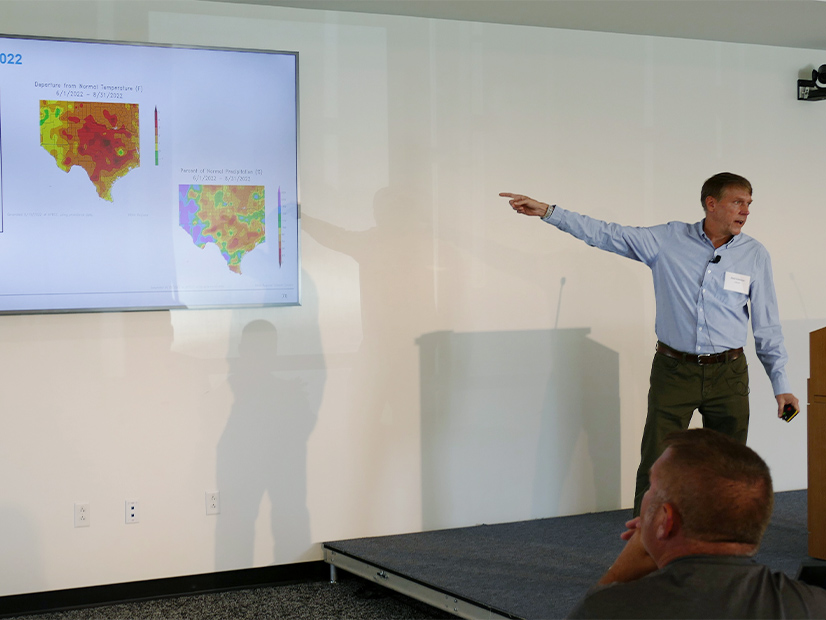Maryland surpassed its greenhouse gas emission-reduction goal for 2020, according to the final data released by the state Department of the Environment.
According to the data, presented to the Maryland Commission on Climate Change during its quarterly meeting Sept. 27, emissions were down 30% below 2006 levels, beating out its aim to reduce GHGs released by 25% over the same period. Even accounting for the pandemic, which lowered expected pollution from motor vehicles, it is projected that emissions would have declined by 26% over the same period, still meeting the goal.
The most significant declines were in the energy sector, credited to the shift from coal to natural gas and renewable power generation. According to the department’s Vimal Amin, electricity-use emissions fell from approximately 43 MMT of carbon dioxide equivalent in 2006 to about 19 million in 2020.
“Two-thirds of our reductions from [2006] to [2020] have come from the electricity sector, and the reductions here are due to a combination of reduced electricity consumption, as well as changes in the generation mix, namely from replacement of coal-fired generation with natural gas and renewables,” Amin told the commission.
Despite the progress, Mark Stewart, climate change program manager for the department, said in-state clean energy generation lags behind being on track to meet the state’s Greenhouse Gas Emissions Reduction Act goals for 2030. One of the principal causes has been a backlog in reviews for new resources in PJM’s interconnection process.
“There’s been a backlog of projects receiving approval from PJM for connection to the grid, and a lot of these projects are renewable energy,” he said. “That PJM backlog has prevented the development of some projects. They’re working on a new system to fast-track some of those projects that are most ready to be implemented, so we’re optimistic that some of that backlog will be relieved within the next couple of years.”
The decline in energy sector emissions has left transportation as the state’s largest source of GHGs, at 35% of 2020 emissions, the majority of which is on-road vehicles. Amin noted that while the sector has also been seeing a general decline, the drop off going into 2020 is attributed to the COVID-19 pandemic.
The state is also currently lagging behind its 2030 goal of having about 800,000 electric vehicles registered in the state, which Stewart partly attributed to the pandemic reducing the inventory of new EVs on the market.
“On-road gasoline consumption is the biggest single source of emissions in Maryland, so we know the transition to zero-emission vehicles is a key component of the current climate plan and of future climate plans for Maryland,” he said.
Commission Reviews Federal Laws and Funding
The commission also evaluated the impact of the federal Inflation Reduction Act and Infrastructure Investment and Jobs Act on state emission goals, as well as how state and partner organizations are coordinating the use of federal funds.
William Ellis, vice president of government and external affairs at Pepco, said two provisions of the IIJA aim to provide resources for utilities to improve grid resilience under climate change. The utility is preparing concept papers that will allow for them to make applications once the submission period opens.
“It’s helping us to just think through and evaluate concepts related to those two topic areas. Some of the things that we’re thinking through are … undergrounding infrastructure, hardening our substations that could be impacted by climate change, as well as just creating a stronger and more resilient grid aimed at reducing outages through automation of controls, as well as enabling greater renewable penetration on the grid,” he said.
State Department of Transportation Deputy Secretary Earl Lewis Jr. noted that authorization of federal funds for the National Electric Vehicle Program was granted last month, allowing the state to go ahead with its work on installing EV charging stations at regular intervals along 23 identified alternative fuel corridors. (See FHWA Beats Sept. 30 Deadline for Approving States’ EV Charging Plans.)
“We’re working to expand Maryland’s robust electric vehicle charging infrastructure that currently has 1,266 charging stations and 3,475 charging outlets as of Aug. 31, 2022,” he said.
The state has also invested $436 million toward its ZEV program, bus pilots and electric bus procurements, with the first buses expected to arrive next year and a goal of converting half of its 700-bus fleet by 2030, Lewis outlined.
Maryland Energy Administration Chief of Staff Christopher Rice said his agency has been working with outside organizations to support their applications for federal aid, such as a $9 million carbon-capture entity paired with a cement factory; Montgomery County seeking 13 hydrogen fuel cell buses for $14.9 million; and a $22.9 million project with the Department of Labor to train workers for offshore wind installation and to upgrade Sparrows Point for OSW deployment. (See related story, Md. County’s Electric School Buses to Provide Synch Reserves for PJM.)
Stewart said that even with the new federal funds, the state’s shift to a goal of reducing emissions by 60% by 2031 under the Climate Solutions Now Act of 2022 leaves a gap in the trajectory of GHG reductions. One of the act’s provisions includes a 20-year global warming potential (GWP), rather than the prevailing 100-year model, which emphasizes GHGs that have a concentrated impact in their first few years after being emitted, most notably methane.
“The IRA did not end up being quite as ambitious as what we modeled last year as federal action, indicating that if we pair state [and] federal action under this framework, we’ll still have a lot of ground to cover to hit 60%,” Stewart said.
